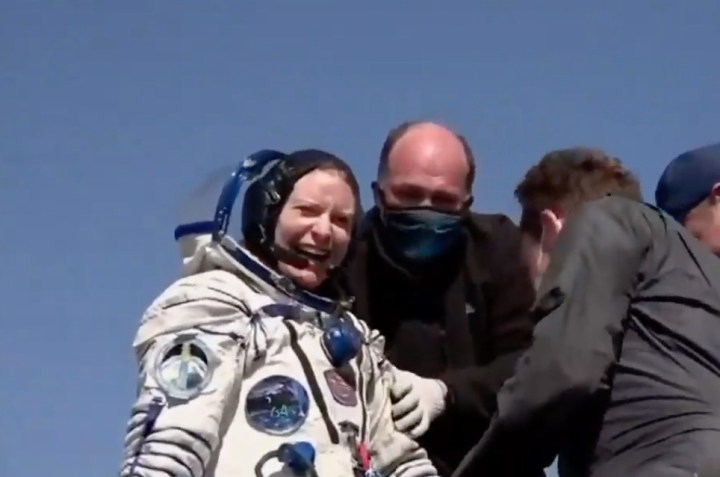
NASA astronaut Kate Rubins and two Russian cosmonauts have safely returned to Earth after a six-month stay aboard the International Space Station (ISS).
Rubins, Sergey Ryzhikov, and Sergey Kud-Sverchkov returned aboard a Soyuz spacecraft, landing in Kazakhstan shortly before 1 a.m. ET (11 a.m. Kazakhstan time) on Saturday, April 17. The journey from the space station took around three-and-a-half hours.
Welcome home! At 12:55am ET (4:55 UT), after 185 days in space, Kate Rubins of @NASA_Astronauts and Sergey Ryzhikov & Sergey Kud-Sverchkov of @Roscosmos touched down in their Soyuz spacecraft on the steppe of Kazakhstan. pic.twitter.com/cOVT9M9Tmf
— NASA (@NASA) April 17, 2021
All three were quickly extracted from the spacecraft and are now undergoing routine health checks. Once complete, the crew members will go their separate ways, with Rubins returning to her home in Houston, Texas, and the cosmonauts flying back to their training base in Star City, Russia.
???????? Astronaut Kate Rubins is all "high fives and smiles" as she takes her first breath of fresh Earth air in 185 days. Aboard the @Space_Station, Rubins conducted hundreds of hours of @ISS_Research, including advancing her work in DNA sequencing. pic.twitter.com/dAAq7Yx3WT
— NASA (@NASA) April 17, 2021
The animation below explains how the spacecraft and crew made it back to Earth.
This animation shows what the Soyuz spacecraft descent to Earth will be like as it returns with the Exp 64 crew. #AskNASA | https://t.co/cBNqC61h27 pic.twitter.com/Dx0rjnF4qx
— International Space Station (@Space_Station) April 17, 2021
During her time aboard the space station, Rubins took part in two spacewalks, voted in the U.S. presidential election, and worked on a range of experiments.
The three astronauts experienced 2,960 orbits of Earth and traveled a total of 78.4 million miles during their half-year mission.
This was Rubins’ second spaceflight after another in 2016, with 300 cumulative days spent in space. Ryzhikov has now completed his second spaceflight, with 358 cumulative days in space, while Kud-Sverchkov was on his first spaceflight.
The departure of the Soyuz spacecraft from the ISS on Friday marked the formal start of Expedition 65 aboard the station. The current inhabitants of the orbiting outpost are NASA astronauts Shannon Walker, Victor Glover, Michael Hopkins, and Mark Vande Hei, Japan Aerospace Exploration Agency (JAXA) astronaut Soichi Noguchi, and cosmonauts Oleg Novitskiy and Pyotr Dubrov.
Editors' Recommendations
- Junk from the ISS fell on a house in the U.S., NASA confirms
- NASA astronauts will try to grow plants on the moon
- How to watch SpaceX Crew-7 return to Earth this week
- NASA astronauts need good weather for Crew-8 launch. Here’s how it’s looking
- Watch this astronaut’s ‘space waltz’ on the ISS


